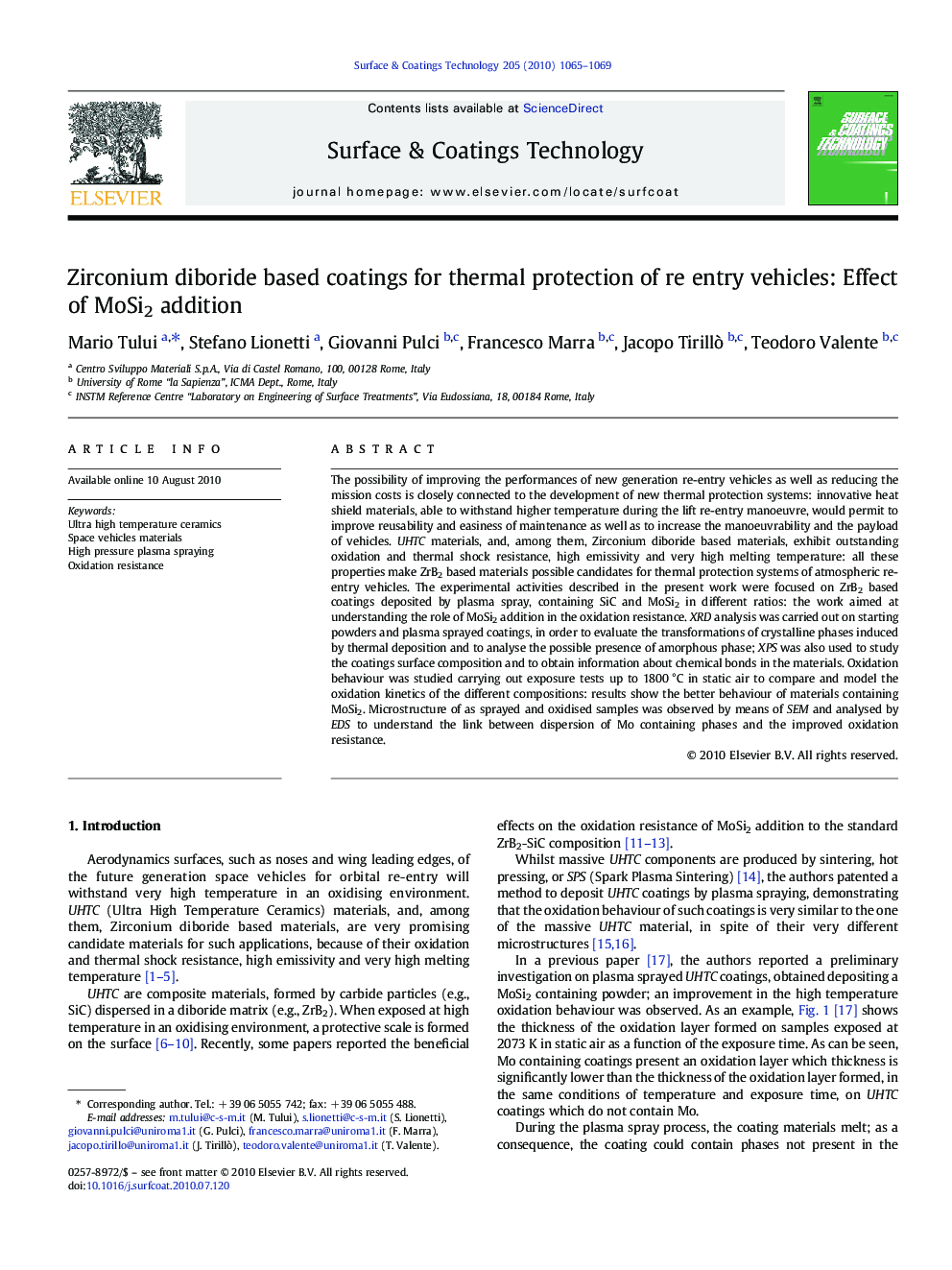| Article ID | Journal | Published Year | Pages | File Type |
|---|---|---|---|---|
| 1659033 | Surface and Coatings Technology | 2010 | 5 Pages |
The possibility of improving the performances of new generation re-entry vehicles as well as reducing the mission costs is closely connected to the development of new thermal protection systems: innovative heat shield materials, able to withstand higher temperature during the lift re-entry manoeuvre, would permit to improve reusability and easiness of maintenance as well as to increase the manoeuvrability and the payload of vehicles. UHTC materials, and, among them, Zirconium diboride based materials, exhibit outstanding oxidation and thermal shock resistance, high emissivity and very high melting temperature: all these properties make ZrB2 based materials possible candidates for thermal protection systems of atmospheric re-entry vehicles. The experimental activities described in the present work were focused on ZrB2 based coatings deposited by plasma spray, containing SiC and MoSi2 in different ratios: the work aimed at understanding the role of MoSi2 addition in the oxidation resistance. XRD analysis was carried out on starting powders and plasma sprayed coatings, in order to evaluate the transformations of crystalline phases induced by thermal deposition and to analyse the possible presence of amorphous phase; XPS was also used to study the coatings surface composition and to obtain information about chemical bonds in the materials. Oxidation behaviour was studied carrying out exposure tests up to 1800 °C in static air to compare and model the oxidation kinetics of the different compositions: results show the better behaviour of materials containing MoSi2. Microstructure of as sprayed and oxidised samples was observed by means of SEM and analysed by EDS to understand the link between dispersion of Mo containing phases and the improved oxidation resistance.
